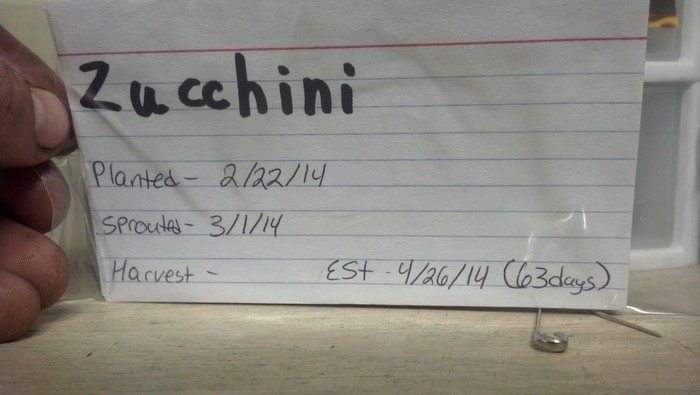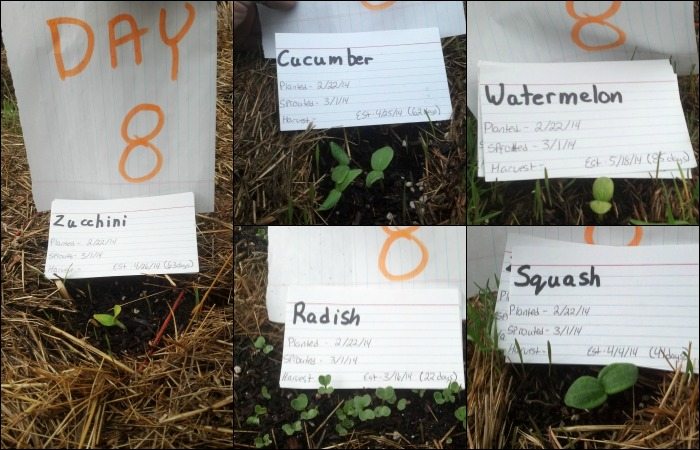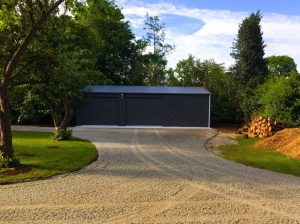Can’t grow plants and vegetables because critters keep eating them? This simple gardening idea might just be the solution for you!
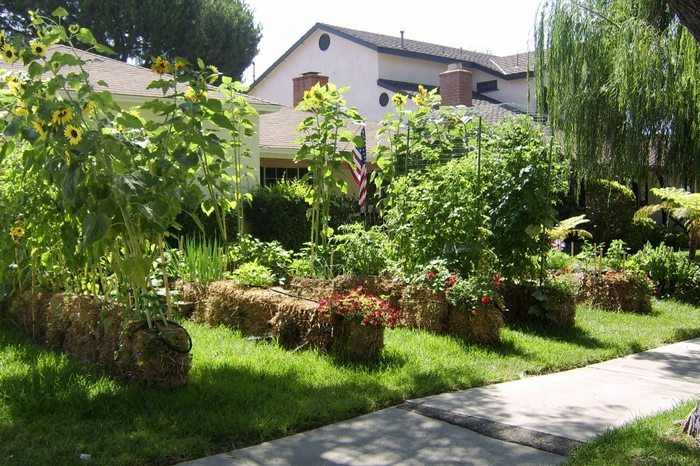
A straw bale garden doesn’t exactly get rid of rodents and other plant eaters but with this set up, they won’t be able to get to your plants.
This is also better than the usual garden in a number of ways. There are less weeds to pull out, sometimes even none! And since you’re planting on an elevated surface, tending to the plants are much easier. Great alternative for gardeners with back and knee pain!
There’s really nothing very special about hay bale gardening, except for the fact that it makes growing plants and produce hassle-free!
Learn more and see how easy gardening is with the tutorial below!
Click on any image to start lightbox display. Use your Esc key to close the lightbox. You can also view the images as a slideshow if you prefer.



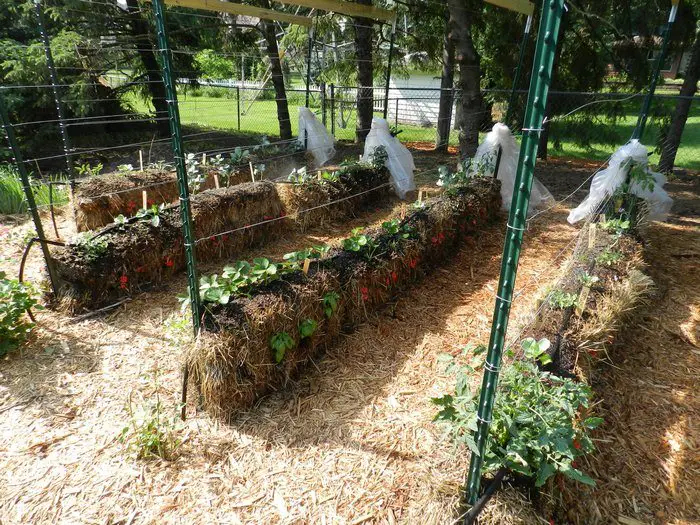
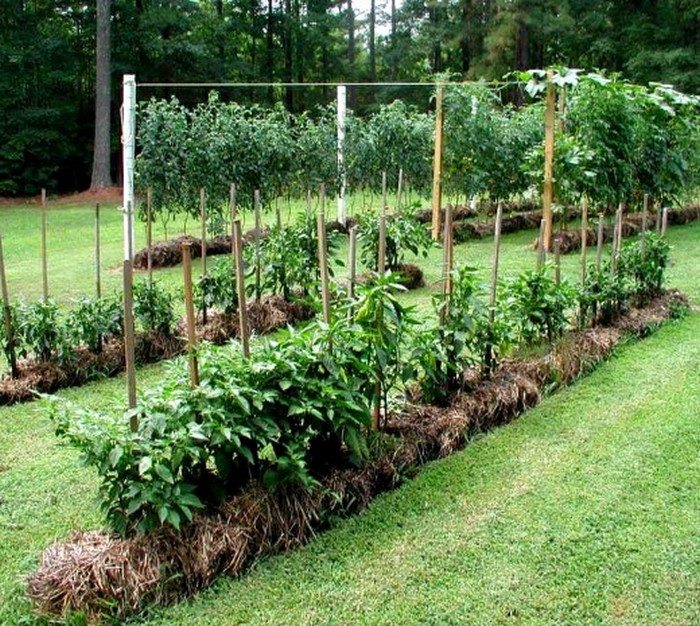
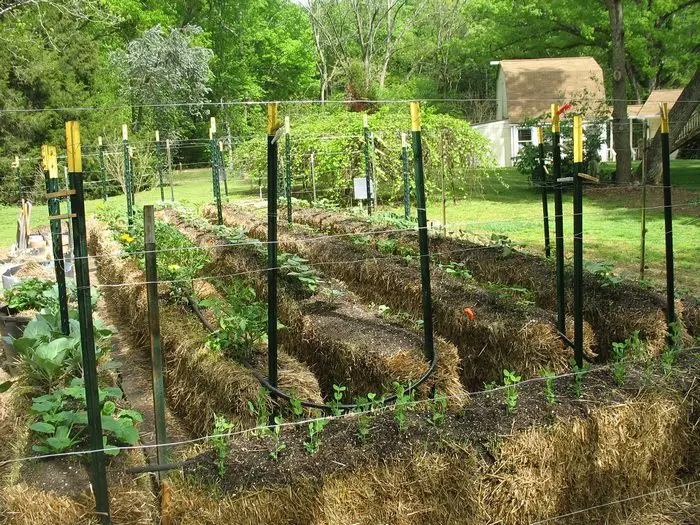
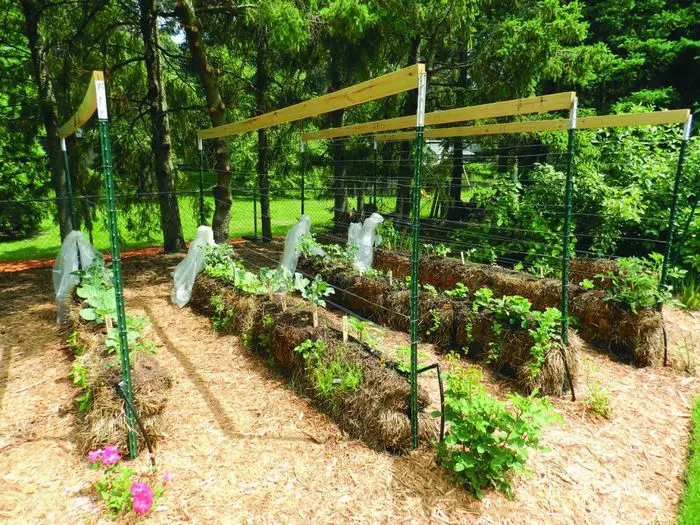

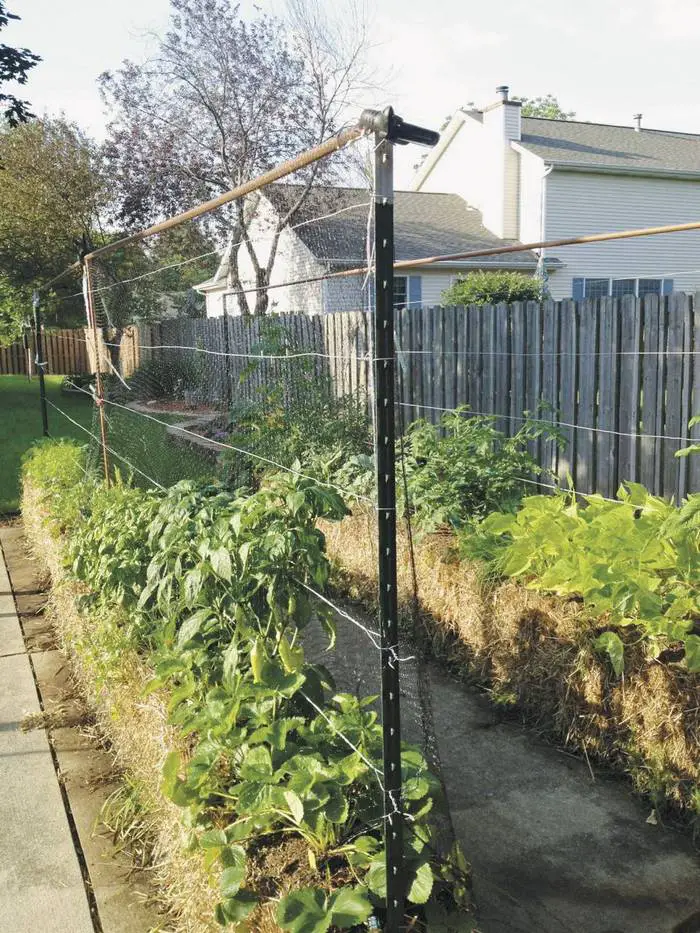
You’ll need these materials:
- Hay Bale
- Potting Soil
- Plant Seeds of your choice (check below for the best seeds for hay bale)
And these tools:
- Mattock
- Hand Cultivator
- Large Cutting Knife
Steps:
Choosing bale type and amount. You will need to choose bales that are easy enough to move around and place into a permanent position as once they get wet, they will be near impossible move. Also choose bales that contain little to no weed or bale seeds. This will cut down on weeding.
Lastly, how many bales will you need need? Depending on your space, it’s safe to say you can get 2 large plants (squash, cucumber, etc.), 4-5 medium plants (peppers, beans, etc.), or 2 rows of plants (carrots, corn, radishes, etc.). So you will need to have an idea of what you want to plant and how much of it you plan to grow. Then just like any in-ground garden, just space them out as you like.
Good bale choices are:
- Straw – has no weeds in it , light weight, about $8-12
- Grass / Pasture Mix – dense, some grass weeds, about $2-8
- Oats – some oat seed in it but not bad, about $8-12
- Wheat – has some seeds but easily stopped early on, about $8-15
- Alfalfa – do NOT use high seed count of both wheat and alfalfa! Not recommended! about $10-16
Prepping the bale. The bales you have chosen will need to be placed and left to “rot” for a few months prior to planting. I got a grass / straw mixture bale and let them sit in the mid-summer sun to early spring time. Now some people will put organic fertilizer on top during this process to help the plants grow and some will use store-bought stuff. That is all personal choice; I did absolutely nothing but let them sit.

I used a few small tools to just open up the bale where I plan to plant seeds. I then put in my soil and seeds. For rows like corn and carrots, I used a large cutting knife from the $.99 store to cut across the bale grain and then dug out the “guts” of it to put my soil in and plant.
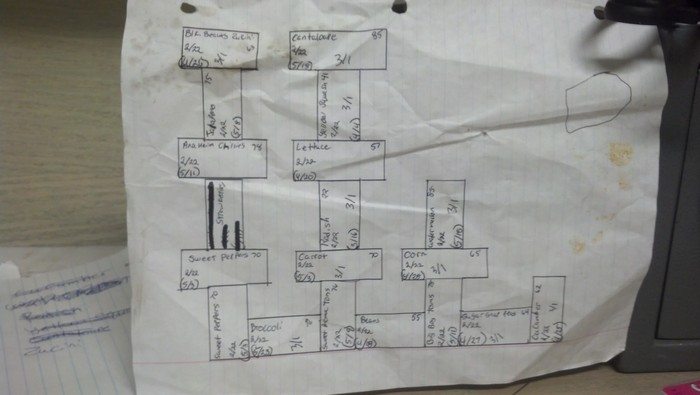
I drew a map / layout of my bales prior to planting so I know what went where and what was sprouting. Simple, easy, reliable.
I also made flash cards of what seeds I planted with the name, date planted, date sprouted, date harvested, estimated harvest date and days to maturity of each seed type.
I used them to show what was growing and how many days since planting so I can track the progress of it for my self and you guys.
I put each packet in its own snack size zip lock baggie. If the seeds fell out of the packet they wouldn’t get scattered all over, because I don’t want to fold the packets, too. I can refer to them as needed if I want to compare dates and such. Ninety-nine cents gets you 60 baggies.
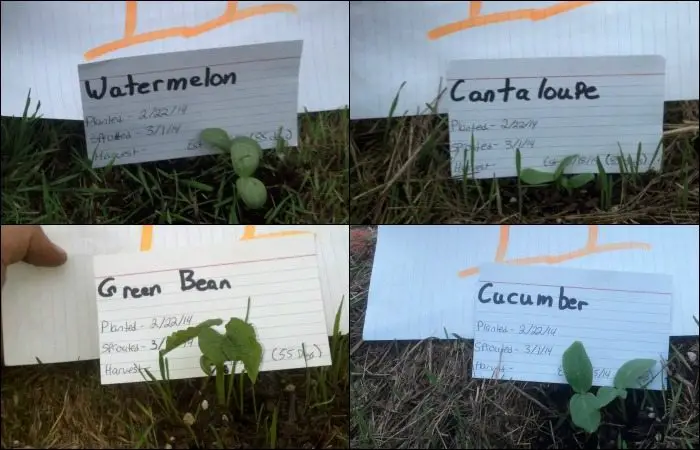
My beans must be Jack’s magic beans! They came out a day ago just barely, and today they are 1.75″ tall!
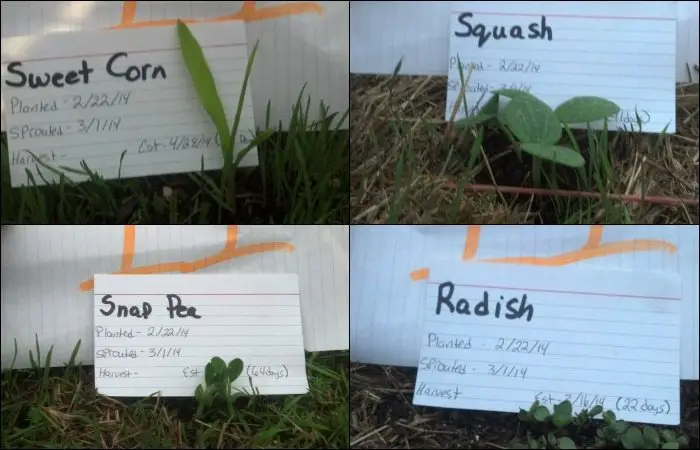
So far everything is growing great and hassle free. Aside from some grass that is growing on the bales, it’s working beautifully. The bales stay nice and luke warm inside, and I have not used any chemicals or fertilizers other than the potting soil I started the seeds in.
Thanks to moonshine88 for this great tutorial!


